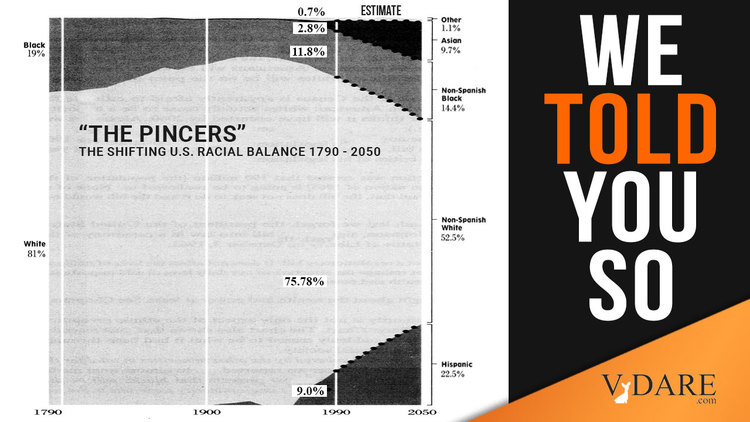From 538:
CONSPIRACY THEORIES
The Twisted Logic Behind The Right’s ‘Great Replacement’ Arguments
By Kaleigh Rogers
Kaleigh Rogers is FiveThirtyEight’s technology and politics reporter.
MAY 26, 2022, AT 6:00 AM
Days after a white gunman shot 13 people, killing 10, at a grocery store in a majority-Black neighborhood in Buffalo, New York, Fox News host Tucker Carlson aired a segment about the “great replacement theory.” … It’s a narrative so prevalent on the right that nearly half of Republicans believe that immigrants are being brought to the country for political gains. According to a poll conducted in December by the AP-NORC Center for Public Affairs Research, 47 percent of Republicans agreed with the statement that “there is a group of people in this country who are trying to replace native-born Americans with immigrants who agree with their political views.”
What would Foucault say about such a cynical view? Obviously, he’d agree that it’s sheerly a coincidence that Democrats favor letting in lots of Democratic-leaning immigrants.
… The theory’s first inaccurate assumption is that white Americans will soon become a minority population. But using any nuanced reading of the data, that’s not true. Yes, in 2015, the U.S. Census Bureau published a population projection that by the year 2044, non-Hispanic white Americans would no longer be a numerical majority in the country. But not being the majority is not the same as being a minority:
Yes, it is.
Even in that projection, non-Hispanic white Americans would still make up a plurality of the population compared with any other race.
The definition of a “plurality” is the largest minority.
… That nuance affects how Americans think about the future. The same research showed that presenting the demographic-shifts story as “majority-minority by 2044” prompts white Americans to say they feel more anxious and less hopeful. But when you present the same demographic changes in a more nuanced (and accurate) narrative around a rise in multiculturalism and Americans who identify as more than one race, white Americans’ self-reported anxiety was lower, even compared with a control group presented with basic facts about demographic changes with no narrative framing, according to the same study.
In other words, when we monopolize The Narrative, we can talk white people into believing our Narrative.
… Another plot hole in the mainstream replacement narrative is the assumption that immigrants will solely support the Democratic party. …
In fact, the GOP attracts voters from every racial group, and while white voters may be its base, not all nonwhite or immigrant voters are Democrats. That’s to say nothing of the fact that not all immigrants are naturalized and able to vote (take it from this immigrant, who has lived and worked in the U.S. for eight years and still can’t vote).
Another flawed assumption baked into the mainstream presentation of replacement theory is that losing a numerical majority means losing power, but in America, that’s not the case. The reality is that the demographic makeup of the U.S. has been shifting for decades, yet those in positions of power have not fully shifted to match. White men made up about 35 percent of the U.S. population yet held 85.8 percent of Fortune 500 CEO positions in 2020, according to a report from Richard Zweigenhaft, a professor emeritus of psychology who studies diversity at Guilford College in North Carolina. The handful of those seats not occupied by white men are held almost exclusively by white women: Just 1 percent of the Fortune 500 CEOs are Black, 2.4 percent are East Asians or South Asians and 3.4 percent are Latino, per Zweigenhaft’s 2021 report.
Our elected leaders remain out of step with the U.S. population as well. While the current Congress is the most racially diverse we’ve had, it’s still whiter than the general population. People who identify as non-Hispanic white made up 61.6 percent of the U.S. population in 2020, according to the U.S. Census Bureau, but accounted for 77 percent of the voting members in Congress.
To even engage with these incorrect assumptions feels a bit like legitimizing their baseless premise, but when about a third of Americans believe a conspiracy theory based on misleading presumptions, there’s value in carefully deconstructing the false narrative. And when the toothpick scaffolding that holds up the theory is exposed, it’s clear what’s really supporting this narrative: racism and fear.
[Comment at Unz.com]













